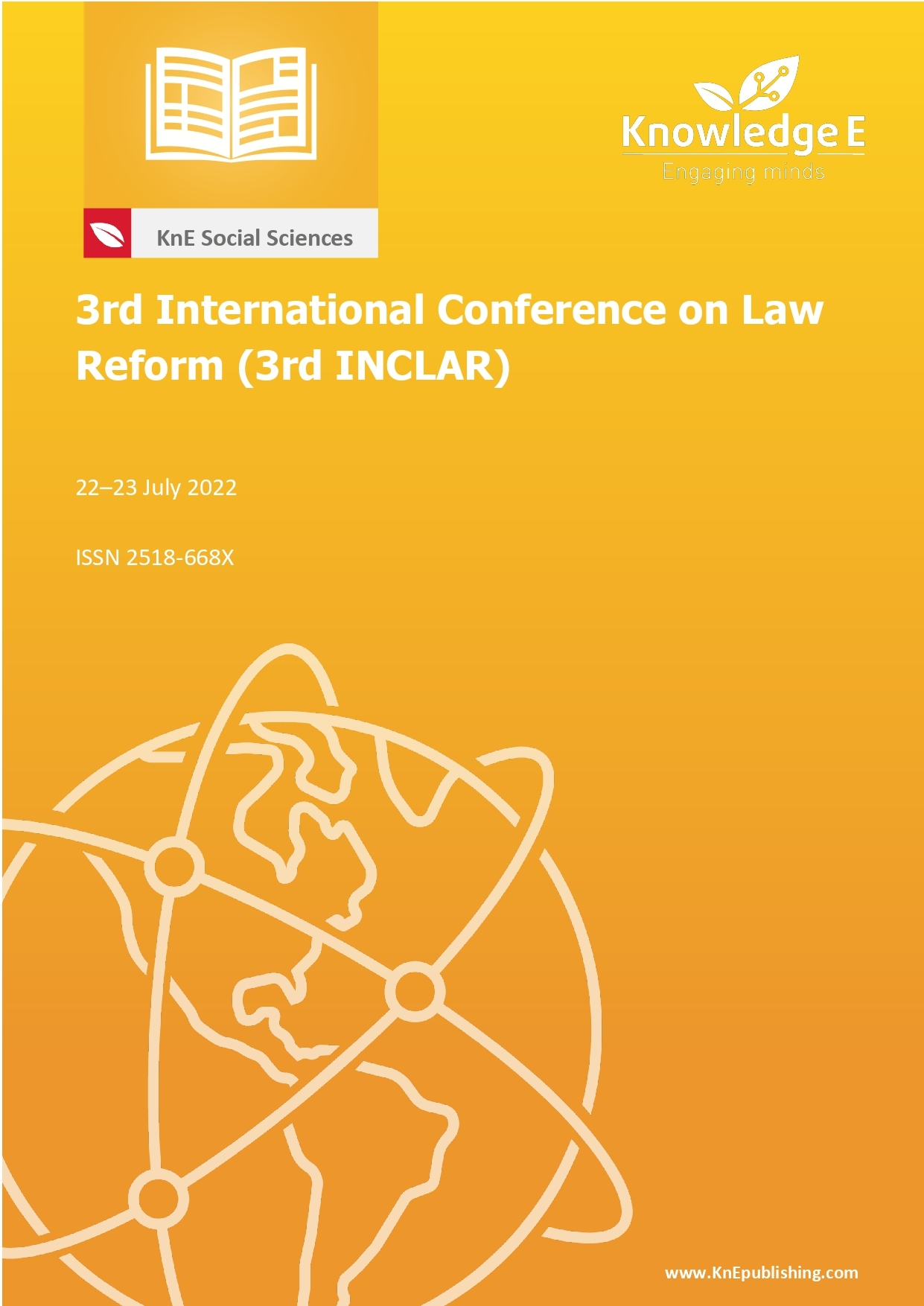Protection of Indonesian Fishermen from China's Threat in the North Natuna Sea Region During the Covid-19 Pandemic
DOI:
https://doi.org/10.18502/kss.v7i15.12102Abstract
The economic importance of the North Natuna Sea is premised not only on its function as one of the largest marine sources in Indonesia but also as an important location for the Indonesian military to conduct large-scale exercises. Amidst the ongoing outbreak of the COVID-19 pandemic, unauthorized fishing by Chinese flagged boats continues to be pervasive in the Indonesian EEZ off Natuna Islands. Chinese coast guard and military vessels were constantly and visibly present in those waters, testing the patience and perseverance of Indonesia’s authorities. The purpose of this article is to find out the cause related to the problem of protecting Indonesian fishermen in catching fish in the region. The Indonesian government is committed to ensuring rapid mobilization of its military and naval assets in the area when required to protect the fishermen. The method used in this research employed the qualitative method and critical content analysis. The legal consequences of ratifying the United Nations Convention on the Law of the Sea 1982 (UNCLOS 1982) with Law No. 17 of 1985 concerning the ratification of UNCLOS, Law No. 32/ 20014 concerning about the sea are the substance of law regulation. The type of data used is secondary data, namely data obtained through literature study. The study matches that Indonesia must develop fishermen with the spirit of defending the country, especially in areas where the waters are partially located within China’s nine-dash line.
Keywords: fisherman, North Natuna Sea, Covid-19 pandemic
References
[2] BBC. Kisah nelayan Natuna hadapi nelayan asing: “Habis kita punya alat tangkap ditabrak, mereka brutal. BBC; 2020.
[3] Fauzan F, Abdullah K, Ahmad MZ. Border security problems in the waters of the Natuna Islands: Between national boundaries and illegal fishing. AEGIS J. Int. Relations. 2019 Nov;3(2): https://doi.org/10.33021/aegis.v3i2.736.
[4] Hu L. Examining ASEAN’s effectiveness in managing South China Sea disputes. Pac Rev. 2021;( Jun):1–29.
[5] BBC. “What is the nine-dash line?” BBC, 2019. [Online]. Available: https://www.bbc.com/news/world-asia-50093028
[6] Fitriana ZM, Maeyangsari D, Wahyudi E. Implementasi Prinsip Partisipatif dalam Pengelolaan Keuangan Desa(Studi Kasus di Desa Jabung, KabupatenLamongan). J. Dedik. Huk. 2021;3(1).
[7] United Nations Convention on the Law of the Sea. [Online]. Available: https://www.un.org/depts/los/convention_agreements/texts/unclos/unclos_e.pdf
[8] Marzuki PM. Penelitian Hukum. Kencana Predana Media Group; 2010.
[9] Juned M, Samhudi GR, Lasim RA. The Impact Indonesia’s Sinking of Illegal Fishing Ships on Major Southeast Asia Countries. Int. J. Multicult. Multireligious Underst. 2019 Apr;6(2):62.
[10] Komeini Y, Situmeang N, Fadra, “The North Natuna Sea Renamed as Geopolitics of Indonesia in Natuna.” Sci. Res. J., vol. VI, no. I, 2018, [Online]. Available: www.scirj.org
[11] CNN. Nelayan Natuna Trauma Gara-gara Lihat 5 Kapal Perang Asing. CNN; 2021.
[12] Anggraini SD, Kusumawardhana I, Ramadhan I. “The implication of Indonesia’s IUU fishing policy in Natuna Territorial Waters towards South China Sea Geopolitics,” J. Int. Relat. 2019; 7(2):118–132. [Online]. Available: https://journal.umy.ac.id/index.php/jhi/article/view/4418/4105
[13] Andryanto SD. “Kapal Perang Cina Masuk Perairan Laut Natuna Utara, Bukan Laut Cina Selatan Lagi,” tempo.co, 2021. [Online]. Available: https://nasional.tempo.co/read/1508501/kapal-perang- cina-masuk-perairan-lautnatuna- utara-bukan-laut-cina-selatan-lagi
[14] Bensa CP, Wijaya L. Media propaganda techniques in the South China Sea Dispute. J. Komun. Ikat. Sarj. Komun. Indones. 2017 May;2(1): https://doi.org/10.25008/jkiski.v2i1.93.
[15] Elisio Beneditio Jamine, “MARITIME BOUNDARIES DELIMITATION, MANAGEMENT AND DISPUTE RESOLUTION,” Div. Ocean Aff. Law Sea Off. Leg. Aff..
[16] De Castro RC. The Limits of Intergovernmentalism: The Philippines’ Changing Strategy in the South China Sea Dispute and Its Impact on the Association of Southeast Asian Nations (ASEAN). J Curr Southeast Asian Aff. 2020 Dec;39(3):335– 358.
[17] Gumelar TA. “Kini TNI AL Tak Segan Usir Kapal China, Media Asing Ungkap 50 Kapal Nelayan Tiongkok Pernah ke Sana di 2020,” ZONAJAKARTA.com, 2022. [Online]. Available: https://zonajakarta.pikiran-rakyat.com/teknologi/pr-184673800/kini-tnial- tak-segan-usir-kapal-china-media-asing-ungkap-50-kapal-nelayan-tiongkokpernah- ke-sana-di-2020

